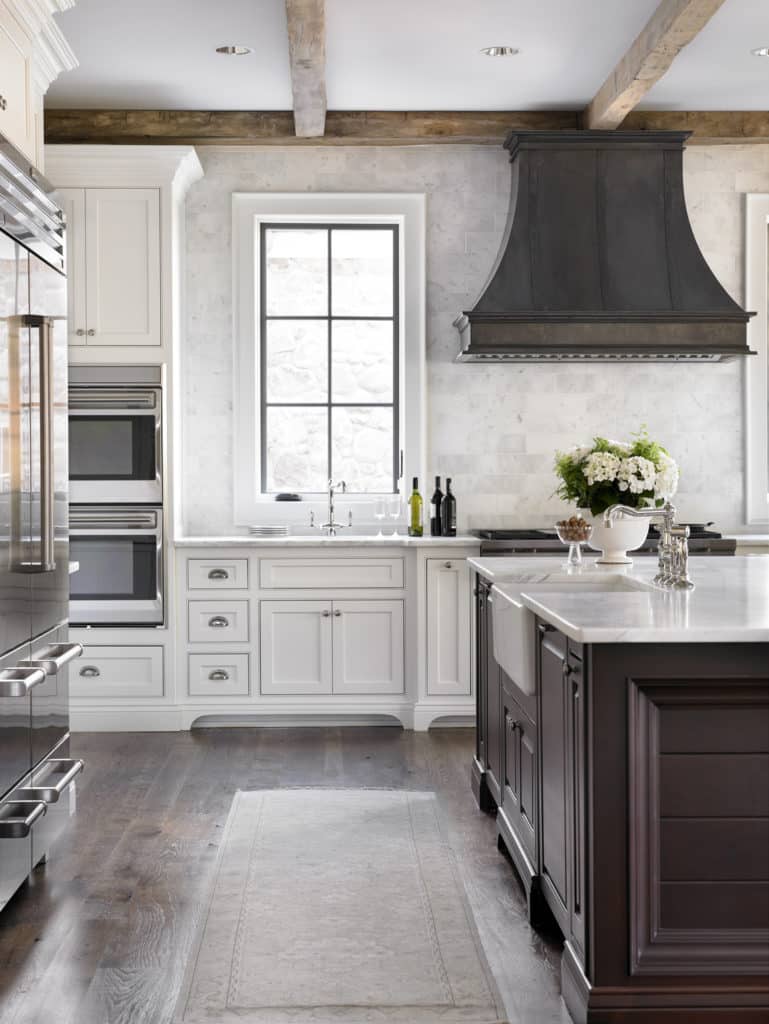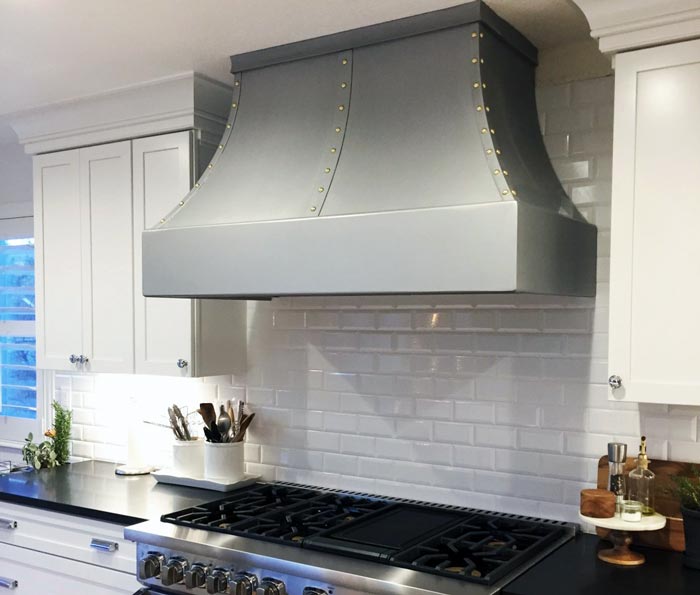When it comes to kitchen design, many homeowners focus on countertops, cabinets, and flooring, often overlooking a critical element: the stove hood. A decorative stove hood not only serves a functional purpose but also acts as a stunning focal point in your kitchen. In this comprehensive guide, we’ll delve into everything you need to know about decorative stove hoods, including their types, styles, materials, installation tips, and maintenance. By the end, you’ll be equipped to choose the perfect hood for your kitchen!
What is a Decorative Stove Hood?
A decorative stove hood, often referred to as a range hood or vent hood, is a device that is installed above your stove to capture smoke, steam, and cooking odors. Unlike traditional range hoods, decorative options are crafted to enhance your kitchen’s aesthetic appeal, making them a vital component in modern kitchen design.
Why Choose a Decorative Stove Hood?
In my experience, a decorative stove hood can completely transform the look and feel of a kitchen. Here are some compelling reasons to consider:
- Aesthetic Appeal: These hoods come in various designs and finishes, allowing you to match them with your kitchen style.
- Improved Air Quality: Effective ventilation removes unwanted smoke and odors, contributing to a healthier cooking environment.
- Increased Home Value: A well-chosen decorative stove hood can enhance your home’s market value.

Types of Decorative Stove Hoods
Decorative stove hoods come in several types, each catering to different kitchen designs and functionality. Let’s explore the most popular types:

1. Wall-Mounted Range Hoods
Ideal for kitchens with a traditional or contemporary style, these hoods are mounted on the wall above your stove.
2. Island Range Hoods
If your stove is situated on a kitchen island, an island range hood is a perfect choice. They offer a 360-degree view and can serve as a centerpiece.

3. Under-Cabinet Range Hoods
These hoods are installed beneath the cabinets, providing a sleek look that saves space and maintains the flow of your kitchen design.
4. Downdraft Hoods
For a minimalist approach, downdraft hoods retract down when not in use. They are an excellent choice for cooktops situated on islands.

5. Custom Range Hoods
If you have a specific vision in mind, custom range hoods can be crafted to match your exact specifications, making your kitchen truly unique.
Materials Used for Decorative Stove Hoods

The materials used in decorative stove hoods greatly influence both their appearance and functionality. Common materials include:
1. Stainless Steel
Durable and easy to clean, stainless steel hoods are perfect for modern kitchens.

2. Copper
Copper hoods add warmth and charm, making them ideal for rustic or farmhouse-style kitchens.
3. Wood
Wooden hoods can be stained or painted to match your cabinetry, creating a seamless look.

4. Glass
For a contemporary touch, glass hoods offer a sleek and stylish appearance.
Styles of Decorative Stove Hoods
The style of your stove hood can significantly impact your kitchen’s overall design. Here are a few popular styles:
1. Contemporary
These hoods feature clean lines and minimalistic designs, perfect for modern kitchens.
2. Traditional
Characterized by ornate details and classic designs, traditional hoods bring elegance and sophistication.
3. Rustic
Rustic hoods often incorporate natural materials and distressed finishes, ideal for country-style kitchens.
4. Industrial
With a raw and rugged appearance, industrial hoods are perfect for loft-style or urban kitchens.
Choosing the Right Size for Your Decorative Stove Hood
Size matters when it comes to stove hoods. A hood should be at least as wide as your stove to effectively capture smoke and odors. Here’s a simple table to help you determine the right size:
| Stove Width | Recommended Hood Width |
|---|---|
| 30 inches | 30-36 inches |
| 36 inches | 36-42 inches |
| 48 inches | 48-54 inches |
Installation Tips for Decorative Stove Hoods
Installing a decorative stove hood may seem daunting, but with some basic tools and knowledge, you can achieve a professional look. Here are some tips based on my personal experience:
1. Check for Electrical Requirements
Ensure that your kitchen is equipped with the necessary electric outlets and wiring.
2. Measure Carefully
Before installation, double-check your measurements to ensure a proper fit.
3. Secure Proper Ventilation
Consider venting the hood externally for the best air quality. If that’s not possible, consider a recirculating model.
4. Follow Manufacturer Instructions
Each hood may have specific installation requirements, so be sure to read the manual thoroughly.
5. Consider Hiring a Professional
If you’re unsure about installation, hiring a professional can save you time and ensure everything is done correctly.
Maintaining Your Decorative Stove Hood
To keep your decorative stove hood looking great and functioning efficiently, regular maintenance is essential. Here are some tips:
1. Clean Regularly
Wipe down your hood weekly to prevent grease buildup. A mixture of warm water and mild detergent works well.
2. Change Filters
Replace or clean filters according to the manufacturer’s guidelines to ensure optimal performance.
3. Inspect for Damage
Regularly check for signs of wear or damage, especially around the ductwork and connections.
Pros and Cons of Decorative Stove Hoods
| Pros | Cons |
|---|---|
| Enhances kitchen aesthetics | Can be expensive |
| Improves air quality | May require professional installation |
| Increases home value | Some models can be noisy |
Decorative Stove Hoods: A Personal Experience
When I renovated my kitchen, choosing a decorative stove hood was a game-changer. I opted for a rustic copper hood that instantly drew the eye. Not only did it complement my farmhouse-style kitchen, but it also effectively ventilated smoke and odors, making cooking a more pleasant experience. The compliments from family and friends validated my choice, and I couldn’t be happier!
FAQs About Decorative Stove Hoods
1. What is the average cost of a decorative stove hood?
The cost can vary widely based on the type, material, and brand, ranging from $200 to over $2000.
2. How do I know if I need a ducted or ductless hood?
If your kitchen allows for external venting, a ducted hood is preferable for air quality. A ductless option is best if you’re limited on space.
3. Can I install the decorative stove hood myself?
While some might manage an installation, it’s advisable to hire a professional if you’re unsure about electrical or ventilation aspects.
4. How often should I clean my decorative stove hood?
To maintain efficiency and appearance, clean your hood at least once a week.
5. Are custom stove hoods worth the investment?
Yes! Custom hoods offer unique designs that can truly personalize your kitchen.
Conclusion
A decorative stove hood is more than just a functional kitchen appliance—it’s a statement piece that can define the style of your cooking space. With the right choice, you can enhance both the aesthetic and functional aspects of your kitchen. Whether you choose a sleek stainless steel design or a warm wooden finish, the right hood can elevate your kitchen to new heights. I hope this guide has equipped you with the knowledge you need to make an informed decision. Happy cooking!